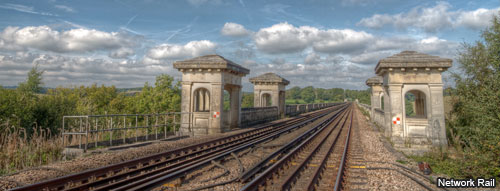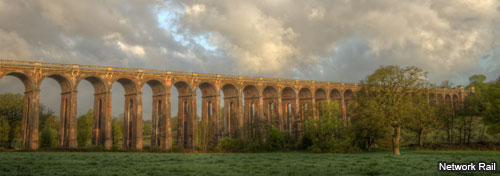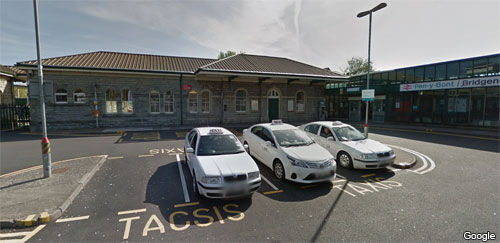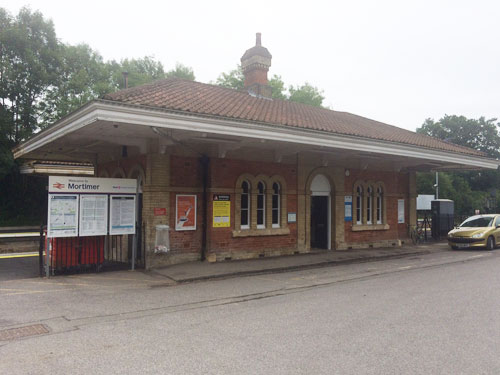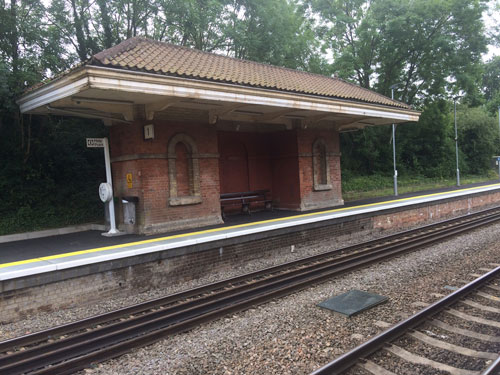|
| OO Scale | N Scale | G Scale | Z Scale | HO Scale | Slot Cars & R⁄C |
| |||||||
|
|||||||
| Home Page | |||||||
| BUY GIFT VOUCHERS | |||||||
| Products | |||||||
| Latest News | |||||||
| RIGHT LINES | |||||||
| Bargains | |||||||
| Downloads | |||||||
| Events | |||||||
| Careers & Jobs | |||||||
| Carriage Services | |||||||
| About Us | |||||||
| Contact Us | |||||||
| Pay Us A Visit | |||||||
| Meet The Staff | |||||||
| Links | |||||||
| SHOPPING BASKET |
Your shopping basket is empty. To add an item, click the "Buy" button
| YOUR ACCOUNT | ||
|
||||
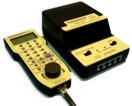 |
||||
| Prodigy Advance Digital System |
||||
| Cased Controllers |
||||
| Panel Mount Controllers |
||||
| Walkabout Controllers |
||||
| Modules & Transformers |
||||
| Scenics & Accessories |
||||
| Wiring & Electrical Components |
||||
| Tiny Signs | ||||
| Tools | ||||
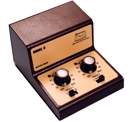 |
||||
| O Scale | Wargaming | Architectural | Narrow Gauge | Tools+ | ||
Railway Architecture Part 1 - Italianate 'Railway Style'

STUART JORDAN looks at the use of this ornate architectural style.
Railway stations and buildings around the world come in all shapes and sizes, often taking influence from surrounding architectural styles, or whatever style was in fashion at the time. In this series of articles I am going to look at the most prevalent styles.
'Italianate' is an architectural style with round-topped windows, square towers, and shallow-hipped roofs. This classical style, unsurprisingly from the name, is based on Italian Renaissance architecture and was incredibly popular in 19th Century Britain and around. It took off in a big way with station designs, so much so that it became known as 'Railway Style'.
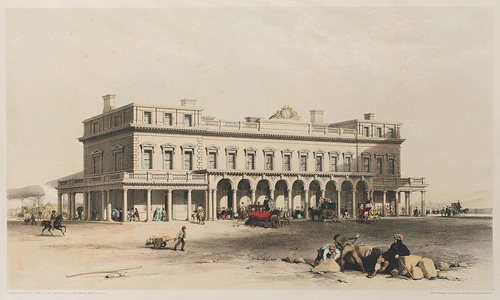
The original Brighton station.
One of the first designers who applied Italianate aesthetics to their work was David Mocatta, who became known as the Master of Railway Italianate. Mocatta became the architect for the London and Brighton Railway in 1839, and designed the original station at Brighton - which was also the L&BR headquarters. Brighton Station first opened in 1841, but this original building is much obscured now by later additions.
The Italianate pavilions on the Ouse Valley Viaduct. Click image to view larger version.
Mocatta designed several other stations on the London to Brighton line, including Croydon, Redhill, Horley, Three Bridges, Haywards Heath, and Hassocks. These stations were all built in an Italianate style, but in an ingenious modular style allowing stations to be modified to fit the location. He also, with engineer John Urpath Rastrick, designed and built the Ouse Valley Viaduct between Haywards Heath and Balcombe. This 450m (1,480ft) viaduct carries the railway line 29m (96ft) above the River Ouse over 37 arches, topped with Italianate balustrades and pavilions designed by Mocatta.
The full span of the Ouse Valley Viaduct. Click image to view larger version.
Another railway architect working around the same time in an Italianate style was William Tite, who later served as president of the Royal Institute of British Architects. Also well known for his work on cemeteries, Tite designed stations all over Britain as well as Northern France. He designed the now-demolished station at Blackwall in London, which served passenger services to a ferry to Gravesend in Kent. Another example of Tite's Italianate work is the station at Woolston near Southampton, with its roof supports and ornate chimneys.
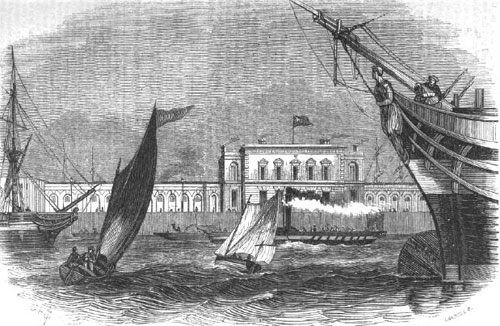
Blackwall Station.
It was on the Great Western Railway that the Italianate style of architecture was most widespread, however. It was certainly a style that Isenbard Kingdom Brunel seems to have fallen in love with, and in the 1840s-50s was used extensively on his South Devon atmospheric railway at Exminster, Starcross, Dawlish, and Torre stations, as well as the pumping stations that provided propulsion.
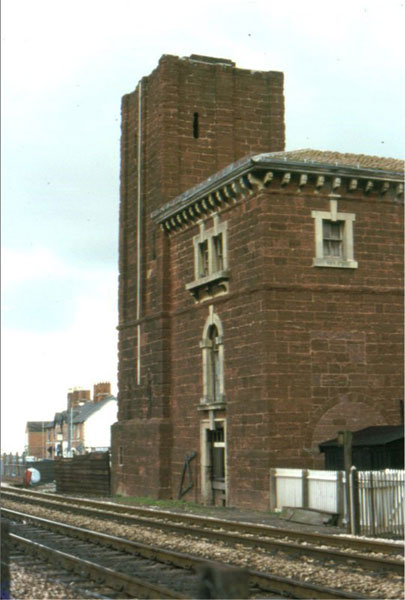
Starcross Pumping Station.
Bridgend Station, with modern addition. Click image to view larger version.
A few GWR Italianate stations in Wales, including Chepstow and Bridgend, were built in stone rather than brick or wood, but with the distinctive roofs and round-topped windows. These station buildings still stand today, although the Italianate 'Railway Style' building that is considered the finest remaining example is Mortimer Station in Berkshire.
The Mortimer Station main building. Click image to view larger version.
Opened in 1848, Mortimer sits between the modern stations of Reading West and Bramley. There are two buildings; a single storey main building with ticket office and waiting room, and a similarly designed shelter on the opposite platform.
The platform shelter opposite. Click image to view larger version.
In time the Italianate style stopped being used for new railway buildings as new innovations, styles, and fashions arrived, but with so many examples surviving to this day it still remains an important and visible part of our railways.
Modelling Italianate Buildings
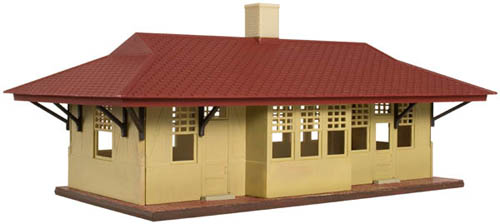
There are a few building kits on the market that can be modified to create Italianate-style buildings. The HO/OO Atlas Rural Station above (also available in O Scale) has a similar style roof, so with the addition of some Wills windows you can kitbash something useful. The Faller Steinbach Station Halt could also be modified, and the Faller Neukirchen Station could be made into a larger Italianate station.
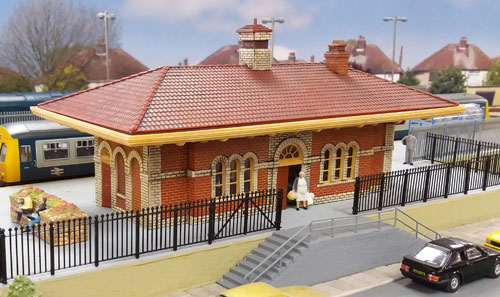
To be released later in 2018 in the Gaugemaster Structures range is a OO Scale kit of Mortimer Station. This kit can of course can be used for many different locations (real or fictional) around the country, but especially on the GWR.
Only £21.95
|
We are always looking to make improvements to our website to try and improve the quality of your visit. We would welcome your feedback and suggestions, so please do not hesitate to e-mail our webmaster with your comments. Alternatively call us on 01903 884488.
Home Cookies Privacy Statement Terms & Conditions Site Map Site Guide
WEEE Regulations Glossary Careers & Jobs
Tel – +44 (0) 1903 884488 Fax – +44 (0) 1903 884377 E-Mail us – click here
Gaugemaster.com is a trading name of Gaugemaster Controls Ltd.
Registered in England No. 2714470, Registered office:
Gaugemaster House, Ford Road
Arundel, West Sussex, BN18 0BN, United Kingdom
VAT Reg. No. 587 8089 71
Copyright © 2003-2014 Gaugemaster Controls Ltd. All Rights Reserved.

